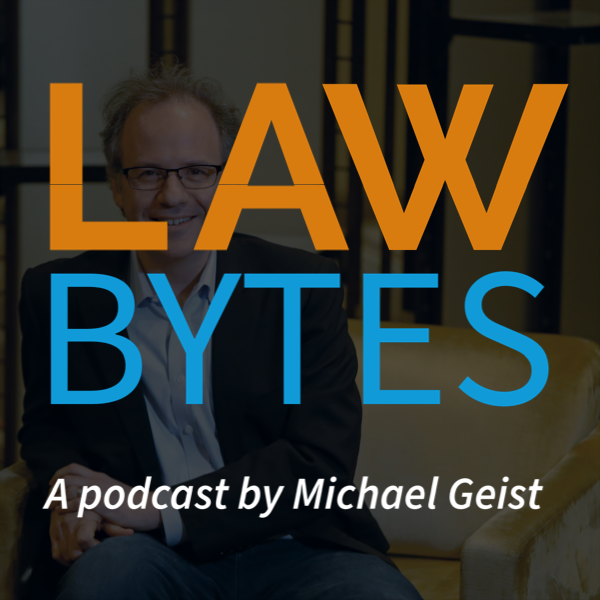Last month, federal privacy commissioner Philippe Dufresne, alongside his provincial privacy counterparts from Quebec, Alberta, and British Columbia, released the results of a multi-year investigation into TikTok’s privacy practices. As my Hub opinion piece notes, the outcome was never really in doubt—look under the hood of any social media company and you will find some privacy concerns—but what was both surprising and risky was the commissioner’s demand that TikTok engage in increased surveillance of its users in the name of better privacy practices.
The commissioners identified several sources of concern, including inadequate communications of privacy practices. This leads to a failure to obtain meaningful consent since a user can’t reasonably consent to something they don’t know about. Those findings are important, but debates over the adequacy of disclosures are the equivalent of a referee calling holding in football. It’s there on virtually every play and can always be invoked.
The more important issue involved youth privacy and underage use of the platform, particularly users under the age of 13. TikTok’s own policies prohibit users that young, but everyone recognizes that implementing an effective ban is not easy. The company uses an “age gate” that asks for the user’s age. If they respond with a date of birth that renders them ineligible to use the service, TikTok blocks their registration and access.
However, circumventing the age gate is trivial, requiring only inputting a valid date of birth. The company does not require official identification or otherwise confirm the information. To supplement its approach, TikTok seeks to weed out underage users by responding to manual reports (parents reporting that their kids are on the platform) or by using automated monitoring tools that track keywords in which the user might disclosure their real age (“I am in grade 3”) as well as computer vision and audio analytics to seek to identify users under 18 appearing on a TikTok LIVE stream.
TikTok says it bans, on average, 500,000 user accounts in Canada alone each year using these systems. Given that there are under 2 million Canadians between the ages of 10 and 13, that sounds like a fairly effective approach that arguably meets the company’s legal obligation. Yet the privacy commissioners argued that it isn’t enough, noting without any specific data that there are many underage users who still manage to evade detection.
That may well be true, but the proposed solution risks trading one harm for another. As part of the investigation, TikTok agreed to implement a series of additional measures that will increase the tracking of user activity on the platform. First, the company promised to adopt a “core underage model” that will use both facial scanning found in content posted on the platform and behavioural signals (such as videos watched or liked) to identify those that are likely aged 13 and under. Second, it said it will use natural language processing to analyze the text of users that is found in their biographies or posted comments.
Yet even facial scanning, behavioural tracking, and text analysis were not enough for the privacy commissioners, who feared that those systems would only cover active users on the site. Since the majority of users are lurkers who view videos but do not post or comment, more was required. The company is therefore also required to create a new “passive underage detection model” that gathers a range of data points that might better identify underage users. Details on the system are limited, but the company appears to be relying upon artificial intelligence that learns from previous patterns of platform activity by underage users.
While all of these systems will be subject to privacy impact assessments, the reliance on increased surveillance systems that actively scan faces, text, and platform conduct raises its own set of privacy concerns. Many other platforms might have rejected the demands, opting instead to challenge the findings in court. But TikTok is seeking to reverse the government’s decision to ban its corporate operations in Canada and was presumably anxious to avoid a public privacy battle.
The result is a dangerous precedent in which privacy is lost in the name of protecting privacy. Internet platforms obviously engage in tracking user activity for a variety of purposes, including for targeted advertising and user safety. The goal has to date been to limit much of the platform surveillance by establishing legal limits and privacy guardrails. By embracing platform surveillance, the privacy commissioners open the door to demands for similar implementations to address other online concerns. Ensuring children are safe online is a laudable objective, but swapping privacy for increased surveillance is an exceptionally risky way of trying to achieve it.










Pingback: Why The Recent TikTok Privacy Ruling Swaps Privacy for Increased Surveillance - TikTok News
Pingback: Law and Media Round Up – 13 October 2025 – Inforrm's Blog
Find out how this single mom was able to earn $6k/monthly for working (gt222) at her home for a few hours a day and how you can do it yourself .. Read More TAB in my name
This ruling feels like a step backward, it tries to protect kids but ends up normalizing more invasive surveillance for everyone. If privacy regulators themselves start endorsing mass data tracking, we risk blurring the very boundaries they’re supposed to defend.
Ready to test your spelling skills? Scrandle is a fun game that blends crossword puzzles with word challenges. Use letter tiles to build as many words as you can in limited moves. Discover how many words you can make with Scrandle play online!
Football Bros is an exciting game where you team up for thrilling matches. Play Football Bros Game, master skills with your squad, and dominate the field. Get ready to tackle, pass, and score your way to victory in this action-packed Football Bros play online experience!
The multi-jurisdictional investigation into TikTok’s privacy practices raises important questions about whether fragmented oversight can effectively regulate global platforms. Have the commissioners considered harmonizing enforcement approaches across provinces?
Players flock to MCPEDL to discover unique maps, mods, and resource packs that enhance their gaming experience.
horror mod for minecraft bedrock https://mcpedl-minecraft.com/mods-minecraft-pe/horror-mod/
Your writing is remarkably insightful and engaging. I genuinely enjoyed reading your piece and found it both clear and well-crafted.
Additionally, 888starz provides generous bonuses and promotions that enhance the gaming experience.
888starz зеркало uz https://888starz-stars888.com/ru/
Many gamers have fallen in love with the creativity offered by Minecraft. Following its launch, the game has attracted a large player base . For those looking to immerse themselves in this blocky world, downloading Minecraft is the first step .
To download the game, visit the official Minecraft website . On this page, there are several choices tailored for various devices . Once you choose the correct version, just adhere to the given steps .
The installation process for Minecraft is quite simple . If you encounter any issues during the installation, there are plenty of resources available . You can find helpful forums, video guides, and official Q,A sections .
Once installed, you can start creating your own worlds . Within Minecraft lies an infinite canvas for your imagination and exploration. With its features including survival mode and creative mode, players are free to choose their experience .
this title really grabs you! It’s wild how the privacy ruling actually demands increased surveillance from TikTok, supposedly for better privacy. That paradox of swapping privacy for more surveillance, as Michael Geist points out, is incredibly risky and surprising. Thanks for highlighting this unexpected outcome!
888starz uz – yetakchi platformalardan biri. Bu platforma. 888starz uz. Bundan tashqari, bo’lib, hayajonli.
Platformaning yuqori darajada. maxfiy saqlanadi. Shuningdek, taqdim etiladi, bu esa. Bu kabi imkoniyatlar.
yangiliklar. va. mijozlarni.
Shu bilan birga, yuqori sifatli. Har qanday savollarga. va. hisoblanadi.
888starz zerkalo https://888starzuzbekistan.net/
Agario has this amazing balance where even small cells can outplay giants with smart moves. Skill genuinely matters, and that makes every victory feel earned.
Players often commend its intuitive layout and visually appealing aesthetics.
888starz https://www.carolinestorefinder.com/
Additionally, 888starz has established a strong support system for its players.
888starz.bet https://photalife.com/
Assistance is readily available through phone, email, or live chat options.
888starz promo code 2025 no deposit bonus https://888starz-eng.com/promocode/